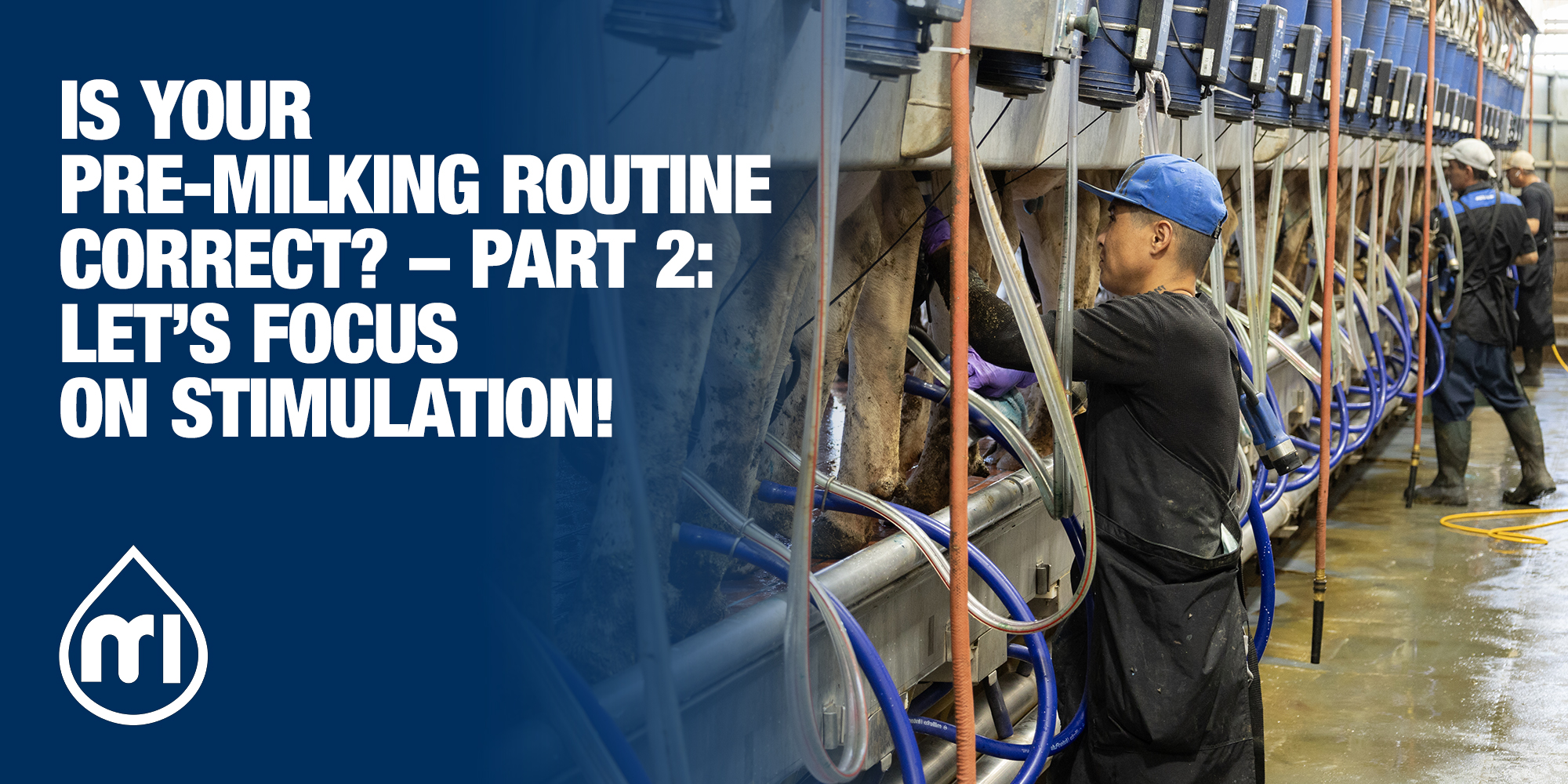
Is your pre-milking routine correct? - Part 2: Let’s focus on stimulation!
Listen to this article!
A proper pre-milking phase implies correct stimulation for oxytocin release in cows. How can this be achieved? Here is some advice from our team!
After the overview on how our Dairy Performance Managers Maciej Dyrka and Ghislain Coppejans suggest your pre-milking should take place, we would like to shed light on a specific goal of this process: stimulation.
Firstly, let’s understand what this stage is and why it is crucial, then we will discuss some relevant points that could boost your cows’ stimulation. Here is what our experts said:
“Stimulation is the mechanical treatment of the teat either by hand, with water, or with a massage. This means that it starts by touching the teat and, when properly led, enables the brain to produce oxytocin, which enters the udder through the bloodstream, and ultimately allows cells to secrete milk. Efficient stimulation synchronizes milking out the alveolar milk (high up in the udder tissue) with the cisternal milk (in the udder just above the teat), and cows will milk out cleaner and faster.”
Boost your stimulation: avoid these mistakes and their consequences
We went on asking Maciej and Ghislain what common mistakes are often made during pre-milking, hoping this could help you improve the effectiveness of the process in your parlours!
Chasing and shouting at the cows as they enter is the very first mistake to be avoided. Their nervousness, in fact, leads cows to produce the stress hormone cortisol, which temporarily compensates the effects of oxytocin. As a consequence, there will not be a good peak flow within the first 2 minutes, and the cow will be milked longer, reaching so-called over-milking, another potential threat to udder integrity and animal health.
A further error often made by farmers is not maintaining the correct prep-lag of 60-120 seconds. The causes could include a wrong adjustment of the pre-milking routine according to milkers’ experience and skills. Ideally, with correct stimulation alveolar milk, which represents 80% of the total amount milked, should be released right after the cisternal one, accounting for 20%.
Along with creating delays in milk release, and ultimately in the entire process, wrong stimulation also causes bimodal milking profiles, as there is a drop between the two types of milk, which leads to longer milking time, congestion and oedema, exposing the animal to mastitis.
In addition, farmers and milkers might not follow the ideal order when milking cows. In fact, our experts advise:
Heifers and freshly calved cows – they have the lowest somatic cell count (SCC) and are more susceptible to infections, so they should be milked first to reduce the risk of contamination.
High-yielding cows – they produce a large amount of milk and require optimal milking conditions.
Lower-yielding cows – their milk is less prone to quick contamination, but they should be separated from the higher-yielding cows.
Sick cows (with mastitis or other health issues) – should be milked last to prevent the spread of infections to healthy cows. If possible, sick cows should be milked with separate equipment or in a different area to minimize the risk of herd infection.
Another crucial mistake is avoiding some of the steps mentioned in the previous Blog episode, such as teat stripping and wiping the tip of the teat where most bacteria reside.
The use of incorrect tools is another threat to a positive outcome of the pre-milking phase. As an example, many might not use disposable gloves, or not use them disinfected. Furthermore, the disposable towel might either not be suited to the level of a cow’s dirtiness or be used on several animals carelessly.
What might cause all these wrong procedures?
On the one hand, a lack of observation, which could take place by recording what happened during milking and, subsequently, analysing what was collected.
On the other hand, a lack of regular training and elimination of milking errors.
Why is effective stimulation the right choice to make?
Many milkers are afraid of losing capacity when spending more time with pre-treatment. To prove the efficiency of better pre-milking we need to analyse the different handling types: pre-treatment, attaching, checking and post-treatment, cow changing and milking time.
The following table shows the influence of a longer prep time on capacity, through a calculation of:
The “man time”, a total of all pre-milking actions, including attachment, control, and post treatment.
The “available man time”, determined by the number of cows (milking points) one milker will handle.
When cows are better stimulated their machine on time will decrease: 20 seconds of intense stimulation through extra massage time allow a gain of 30 seconds, increasing the capacity of 1 to 2 cows more per hour.
These Blog posts about pre-milking, made possible thanks to Maciej and Ghislain’s expertise, enhanced the essential role that hygiene, care for the animals, and quiet play in a proper routine.
We then hope you took some notes on the main best and worst practices, so that the insight into pre-milking and stimulation we shared will help improve the health of your herd, process efficiency, and ultimately the farm profitability!
Lastly, make sure not to miss our next Blog post.
milkrite | InterPuls thank Maciej Dyrka and Ghislain Coppejans for the support.
